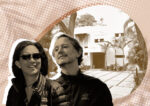Trending
Architecture review: Columbia’s two new Renzo Piano-designed buildings don’t hold a candle to the original
Columbia University’s two new Renzo Piano-designed buildings don’t hold a candle to the school’s original campus, but they aren’t equals either
From the August issue: It is hard to imagine a greater difference — in formal, philosophical or societal terms — than the one between Columbia University’s main campus in Morningside Heights, begun at the end of the 19th century, and the new campus taking shape half a mile north in Manhattanville.
The original campus, which was conceived by Charles Follen McKim of McKim, Mead & White, is a quintessential example of Beaux-Arts city planning — or, as it was known in the United States, the City Beautiful Movement. The very syntax of the name, City Beautiful rather than Beautiful City, reveals all you need to know. It has an aspirational, vaguely feudal or at least archaic tinge. The campus is not only robed in mythology, but it also has an unflappable symmetry and hierarchical distribution of classically designed buildings.
Nothing could be more opposed to the dominant thrust of contemporary taste at the university’s new West Harlem outpost. Yet, the new campus sums up the present cultural and political moment as fully, if not quite as thrillingly, as its predecessor.
Click here to read more.




